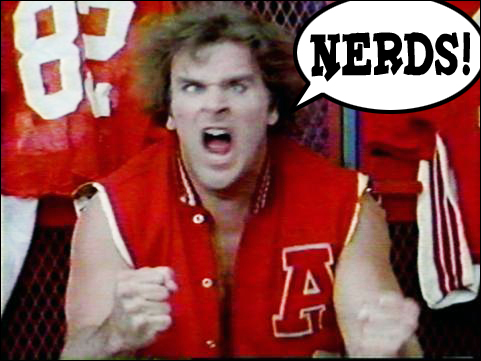Figured I’d start a new thread to try to create a more focused discussion to share and discuss what was learned at the seminar. It was a really great time and mad props again to Fris and jnai for putting on a great symposium—many persons of some significance in the baseball community were heard mentioning that they had stopped going to things like the Sloan conference but continued coming to this one because it was just better.
To begin, a big takeaway for me this year was a general sense of just how much more the more analytically progressive teams know—or think they know—about how to succeed at baseball than those clubs that lag behind and fan population in general. There was a heightened awareness on the part of insiders and of outsider presenters of the notion of the internal analysis the teams had and that they see certain things as key to getting better of which the public is not even aware of, or at least as lagging behind.
So there’s a bit of a distinction to be made between the “popular science” of baseball which encompasses fans and websites like FanGraphs, B-ref, B-Pro, THT and the like and the FOs and management of the teams and the different spheres of knowledge. Obviously, we knew this distinction existed, and certainly there is overlap, but it seemed to come across in high relief this year. A good example might be how the work on catcher pitch framing being done by our own jnai and others is bringing us, the fans, and understanding of the value there that is apparently understood by some teams (GO SOX!!) but not by others.
Anyway, I’ll now list some of what I remember and hopefully others will fill the gaps of what I missed due to working the merchandise table (awesome stuff available here, by the way—all proceeds go to the Jimmy Fund), fighting with my automobile, or, as Fris insists, sleeping through Farrell’s talk.
Also, for some reason many of the SoSHers there would not reveal themselves. Gave off a real Cold War spy vibe.
I’ll list the talks out separately to facilitate quoting posts for ongoing discussion.
To begin, a big takeaway for me this year was a general sense of just how much more the more analytically progressive teams know—or think they know—about how to succeed at baseball than those clubs that lag behind and fan population in general. There was a heightened awareness on the part of insiders and of outsider presenters of the notion of the internal analysis the teams had and that they see certain things as key to getting better of which the public is not even aware of, or at least as lagging behind.
So there’s a bit of a distinction to be made between the “popular science” of baseball which encompasses fans and websites like FanGraphs, B-ref, B-Pro, THT and the like and the FOs and management of the teams and the different spheres of knowledge. Obviously, we knew this distinction existed, and certainly there is overlap, but it seemed to come across in high relief this year. A good example might be how the work on catcher pitch framing being done by our own jnai and others is bringing us, the fans, and understanding of the value there that is apparently understood by some teams (GO SOX!!) but not by others.
Anyway, I’ll now list some of what I remember and hopefully others will fill the gaps of what I missed due to working the merchandise table (awesome stuff available here, by the way—all proceeds go to the Jimmy Fund), fighting with my automobile, or, as Fris insists, sleeping through Farrell’s talk.
Also, for some reason many of the SoSHers there would not reveal themselves. Gave off a real Cold War spy vibe.
I’ll list the talks out separately to facilitate quoting posts for ongoing discussion.

